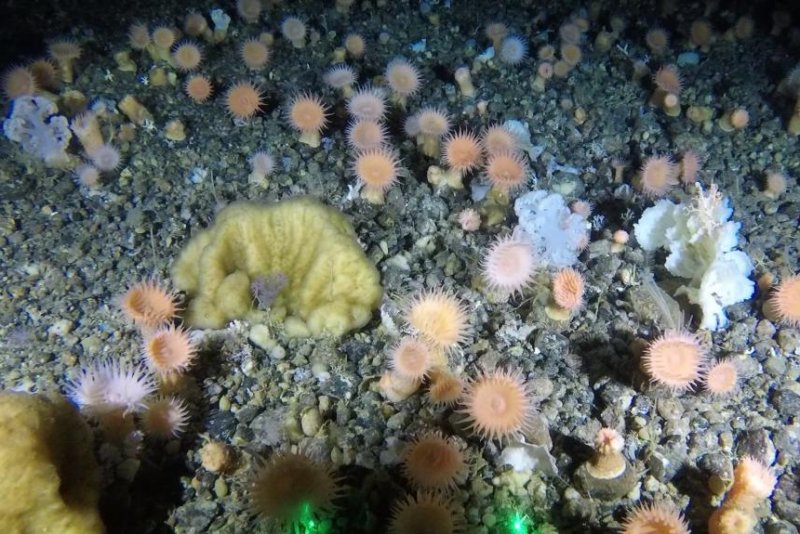Study: Climate change crisis requires less growth-oriented global economy

The pursuit of affluence is a major impediment to curbing global warming and repairing Earth's damaged ecosystems, researchers argue in a new paper. Photo by nikolabelopitov/Pixabay
June 19 (UPI) -- Economies and consumers can't aspire to both affluence and sustainability, researchers warn in a new paper, published Friday in the journal Nature Communications.
Hundreds of studies have highlighted the challenges facing the planet's climate, biodiversity and food systems -- global warming, pollution, habitat loss -- but few have focused on the relationship between Earth's climate and ecological crises and the planet's growth-oriented economies and the pursuit of affluence.

Many economists, business leaders, policy makers and even a few climate scientists have suggested technological advances will see planet Earth and its economies through the climate crisis -- continuing economic growth but with a smaller carbon footprint.
But a new paper by an international team of scientists argues such predictions ignore the realities of economic and environmental history.
RELATED Carbon dioxide reaches a record level despite COVID-19's drastic impact
The authors claim the pursuit of affluence is a major impediment to curbing global warming and repairing Earth's damaged ecosystems.
"Our paper has shown that it's actually dangerous and leads to planetary-scale destruction," Julia Steinberger, a professor of ecological economics at the University of Leeds in Britain, said in a news release. "To protect ourselves from the worsening climate crisis, we must reduce inequality and challenge the notion that riches, and those who possess them, are inherently good."
For the study, researchers looked at the drivers of consumption across the world's largest economies, as well as the role of technology in the pursuit of sustainability.
RELATED New map highlights China's export-driven CO2 emissions
"In our scientists' warning, we identify the underlying forces of overconsumption and spell out the measures that are needed to tackle the overwhelming 'power' of consumption and the economic growth paradigm -- that's the gap we fill," said lead study author Tommy Wiedmann, professor of environmental engineering at the University of New South Wales in Australia.
Analysis of economic and energy-use trends over the last four decades showed that wealth growth has continuously outpaced efficiency gains.
"Technology can help us to consume more efficiently -- to save energy and resources -- but these technological improvements cannot keep pace with our ever-increasing levels of consumption," Wiedmann said.
RELATED Trade can spread economic toll of local disasters globally
The new research also highlighted what many critiques of climate change mitigation plans have pointed out -- that the world's wealthiest citizens shoulder most of the blame for the planet's environmental problems.
The wealthiest citizens have the largest carbon footprint and apply the greatest negative pressure to natural resources, researchers said.
"Consumption of affluent households worldwide is by far the strongest determinant - and the strongest accelerator -- of increased global environmental and social impacts," said study co-author Lorenz Keysser, researcher at ETH Zurich in Switzerland.
RELATED Greta Thunberg at Davos: 'Pretty much nothing' done on climate change
But authors of the new study suggest it is not just individual attitudes about affluence that must change. They also note that all of the world's largest economies are designed to prioritize growth, which they call problematic.
"The structural imperative for growth in competitive market economies leads to decision makers being locked into bolstering economic growth, and inhibiting necessary societal changes," Wiedmann said. "So, we have to get away from our obsession with economic growth -- we really need to start managing our economies in a way that protects our climate and natural resources, even if this means less, no or even negative growth."
To address the problem of overconsumption by the planet's wealthiest citizens, researchers suggest a range of taxes could be used to alter spending behaviors and shift investment patterns.

Some scientists estimate that the world's economies will actually need to shrink in order to stave off ecological disaster.
"'Degrowth' proponents go a step further and suggest a more radical social change that leads away from capitalism to other forms of economic and social governance," Wiedmann said.
"Policies may include, for example, eco-taxes, green investments, wealth redistribution through taxation and a maximum income, a guaranteed basic income and reduced working hours," Wiedmann said.
While there is disagreement on what must be done, authors of the new paper claim there is no doubt that current economic trends are unsustainable.

"The strongest pillar of the necessary transformation is to avoid or to reduce consumption until the remaining consumption level falls within planetary boundaries, while fulfilling human needs," researchers wrote in the new paper.
"Avoiding consumption means not consuming certain goods and services, from living space (overly large homes, secondary residences of the wealthy) to oversized vehicles, environmentally damaging and wasteful food, leisure patterns and work patterns involving driving and flying."
But authors of the new study suggest it is not just individual attitudes about affluence that must change. They also note that all of the world's largest economies are designed to prioritize growth, which they call problematic.
"The structural imperative for growth in competitive market economies leads to decision makers being locked into bolstering economic growth, and inhibiting necessary societal changes," Wiedmann said. "So, we have to get away from our obsession with economic growth -- we really need to start managing our economies in a way that protects our climate and natural resources, even if this means less, no or even negative growth."
To address the problem of overconsumption by the planet's wealthiest citizens, researchers suggest a range of taxes could be used to alter spending behaviors and shift investment patterns.

Some scientists estimate that the world's economies will actually need to shrink in order to stave off ecological disaster.
"'Degrowth' proponents go a step further and suggest a more radical social change that leads away from capitalism to other forms of economic and social governance," Wiedmann said.
"Policies may include, for example, eco-taxes, green investments, wealth redistribution through taxation and a maximum income, a guaranteed basic income and reduced working hours," Wiedmann said.
While there is disagreement on what must be done, authors of the new paper claim there is no doubt that current economic trends are unsustainable.

"The strongest pillar of the necessary transformation is to avoid or to reduce consumption until the remaining consumption level falls within planetary boundaries, while fulfilling human needs," researchers wrote in the new paper.
"Avoiding consumption means not consuming certain goods and services, from living space (overly large homes, secondary residences of the wealthy) to oversized vehicles, environmentally damaging and wasteful food, leisure patterns and work patterns involving driving and flying."







